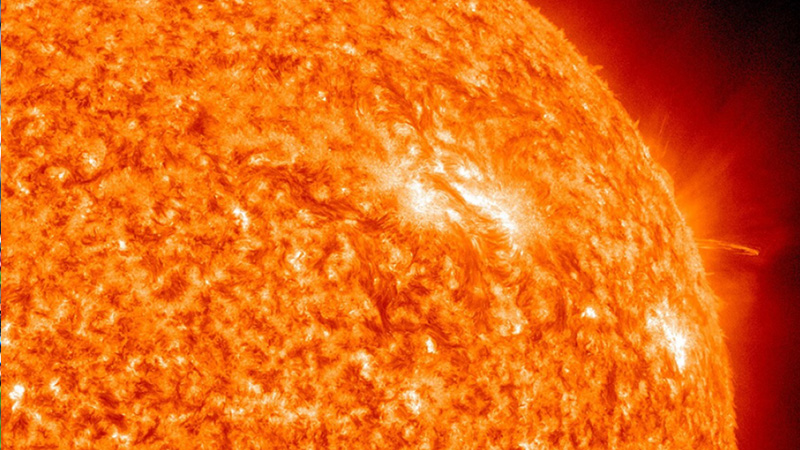UCLA Joins $42 million Department of Energy Hubs to Advance Fusion Energy

Wikimedia Commons
Image of the sun by the Atmospheric Imaging Assembly of NASA’s Solar Dynamics Observatory
UCLA has joined a recently announced $42 million multi-institutional, multidisciplinary program to advance foundational inertial fusion energy research, funded by the Department of Energy. Three Inertial Fusion Energy Hubs will be led by researchers at Colorado State University, the University of Rochester and Lawrence Livermore National Laboratory, which made history last December when it became the first to produce more energy than the amount provided by the lasers to kick-start the reaction — proving that creating energy from fusion is possible.
Physicists, engineers and materials scientists from UCLA will partner with the Lawrence Livermore and University of Rochester hubs.
Fusion occurs when two hydrogen isotopes in a hot gas called plasma join, releasing a large amount of energy. This process powers the sun and other stars and, unlike nuclear fission used in current nuclear reactors, creates no long-lived radioactive waste. Fusion has the potential to provide abundant, reliable and non-carbon-emitting energy, but until last year, the amount of energy needed to kick-start the fusion reaction far exceeded the amount produced.
The hubs aim to meet President Biden’s goal of demonstrating a proof of concept for several different types of fusion power plants in 10 years as part of the effort to achieve the administration’s ambitious climate and energy goals.
UCLA physicists Chris Niemann, Derek Schaeffer and Troy Carter, director of the Plasma Science and Technology Institute at UCLA, have received $500,000 of the funding to lead workforce development, alongside colleagues at MIT and UC San Diego within the Livermore hub. They will create a new inertial fusion energy curriculum, including courses covering key physics and diagnostic concepts, as well as summer schools held at UCLA to train undergraduate and early graduate students in theoretical and hands-on aspects of laser-driven fusion.
UCLA Samueli School of Engineering materials scientist Morris Wang has been awarded $400,000 to partner with General Atomics and Lawrence Livermore National Lab to spearhead development and fabrication of the fuel pellet, or inertial fusion energy target, using state-of-art additive manufacturing techniques for precision and large volume productions. The group will also develop nondestructive techniques to inspect defects and screen targets.
UCLA physics professors Paulo Alves and Warren Mori, who also has a joint appointment in electrical and computer engineering, are working on the broadband laser-plasma interactions research led by the University of Rochester. They will receive $840,000 to develop and use their advanced simulation software to aid in the development of a direct-drive inertial fusion energy laser system. Other partners in this hub include the University of Nebraska, Ergodic LLC and Xcimer Energy Corp.
